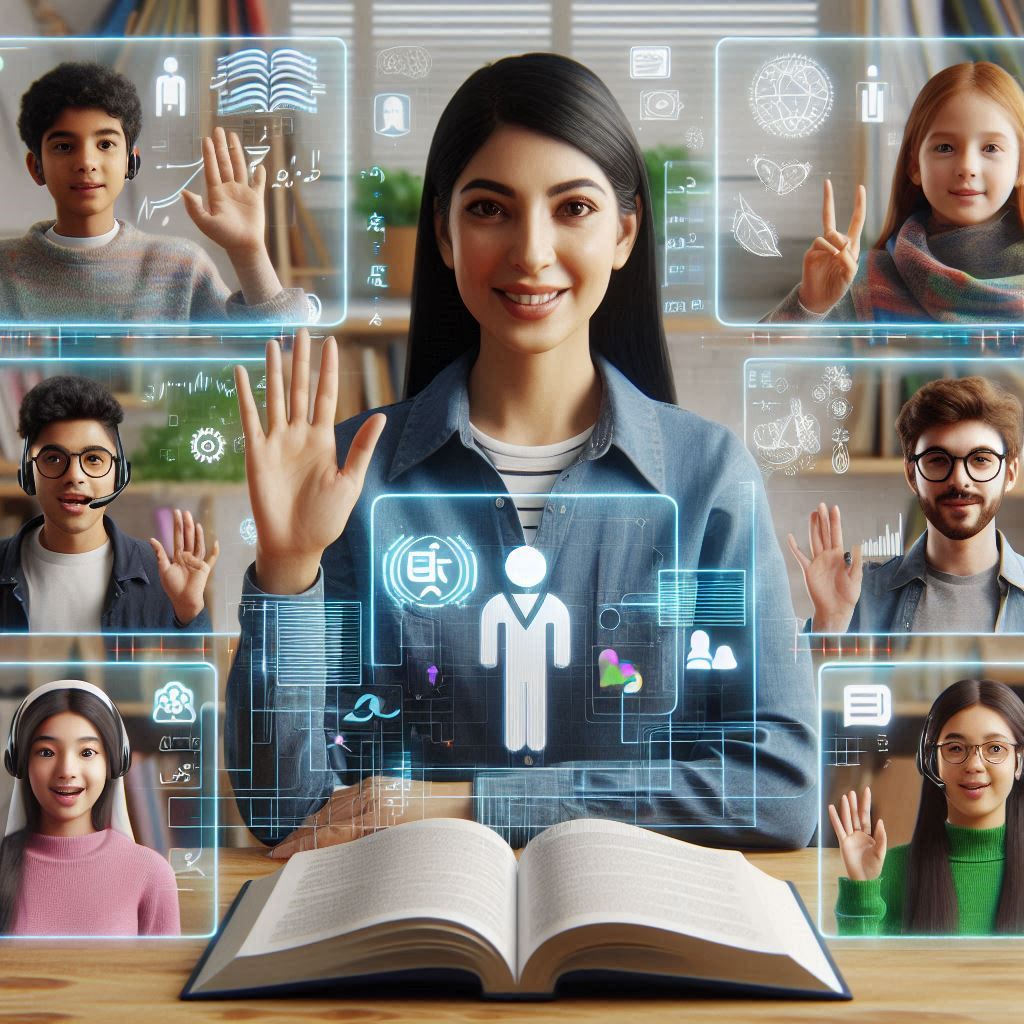
Integrating AI into Sign Language Learning Platforms
- Posted by Cicada Sign
- Categories Blog
- Date September 5, 2024
- Comments 0 comment
The rapid advancement of Artificial Intelligence (AI) continues to revolutionize various sectors, and education is no exception. One area that has benefited immensely from AI integration is sign language learning. New platforms are harnessing the power of AI to offer more personalized, interactive, and accessible learning experiences for both Deaf individuals and those interested in mastering sign language.
This post will explore the transformative role AI plays in sign language education, alongside real-world platforms that are leading this change.
The Role of AI in Sign Language Learning
AI is becoming a game-changer in the way sign language is taught. Here are some of the key ways AI technology is helping to elevate the learning experience:
Real-Time Feedback: AI-driven platforms provide instant feedback, helping learners to correct their signs on the spot. This is especially beneficial for beginners, allowing them to grasp the nuances of sign language faster than traditional methods.
Personalized Learning Paths: AI helps platforms tailor the learning experience to each individual. Based on the learner’s progress, AI systems can adjust the pace and recommend specific lessons or exercises to target areas where more practice is needed.
- Example: Lingvano uses AI to create customized lesson paths based on the learner’s progress and areas of improvement, offering an engaging and adaptive way to learn ASL.
Virtual Tutors: AI-driven virtual tutors simulate one-on-one learning experiences, offering personalized guidance and instant answers to queries. This is especially beneficial for those learning at odd hours or in remote locations.
- Example: The ASL App provides users with video lessons taught by native signers, while the app’s AI ensures lessons are paced according to individual learning styles.
Enhanced Accessibility: AI tools like speech-to-text and sign language recognition software have made it easier for Deaf and hard-of-hearing users to access information and engage in conversations. These innovations enable users to participate fully in learning environments, both online and offline.
- Example: XRAI Glass takes this a step further by integrating AI into augmented reality glasses that provide live captions during video conferences or multimedia consumption, making communication accessible across different environments.
Gamification: AI enables platforms to introduce gamification elements, turning lessons into engaging and interactive experiences. These tools adjust the difficulty based on the learner’s behavior, keeping the learning process fun and motivating.
Leading Platforms Revolutionizing Sign Language Learning with AI
Here are some platforms that are at the forefront of integrating AI into sign language learning:
- The ASL App: This app helps learners master ASL using videos of native signers, combined with AI to personalize learning.
- Lingvano: A versatile learning tool that adapts to user progress and provides an engaging, real-life dialogue simulation.
- XRAI Glass: A cutting-edge augmented reality tool that integrates AI to display live captions, helping Deaf users in video conferences and daily communication.
These platforms demonstrate the transformative power of AI in making sign language education more accessible, personalized, and interactive.
Challenges and Considerations
While AI brings remarkable benefits to sign language learning, there are some challenges to consider:
Data Privacy: AI-driven platforms require access to large datasets, raising concerns around user privacy and data protection.
Accuracy: If AI algorithms are not trained with diverse data, they may fail to accurately interpret signs, particularly from different regions or dialects.
Cultural Sensitivity: Sign languages differ greatly across communities, and AI systems need to be designed to respect these variations and provide accurate interpretations of different sign languages.
The Future of AI in Sign Language Education
As AI technology continues to advance, its role in sign language learning is poised to grow. Innovations like gesture recognition, augmented reality, and AI-powered community learning platforms could redefine the future of Deaf education.
At Cicada Sign, we are committed to exploring these technological advancements and incorporating them into our learning platforms. Our mission is to provide accessible, engaging, and effective sign language learning for all. By leveraging the power of AI, we are helping learners build confidence and develop critical communication skills.

T Letter in ASL
"AI is revolutionizing the future of sign language education, providing learners with personalized feedback, tailored lesson plans, and enhanced accessibility."

"By embracing AI technology, platforms are making sign language learning more engaging and interactive than ever before."



